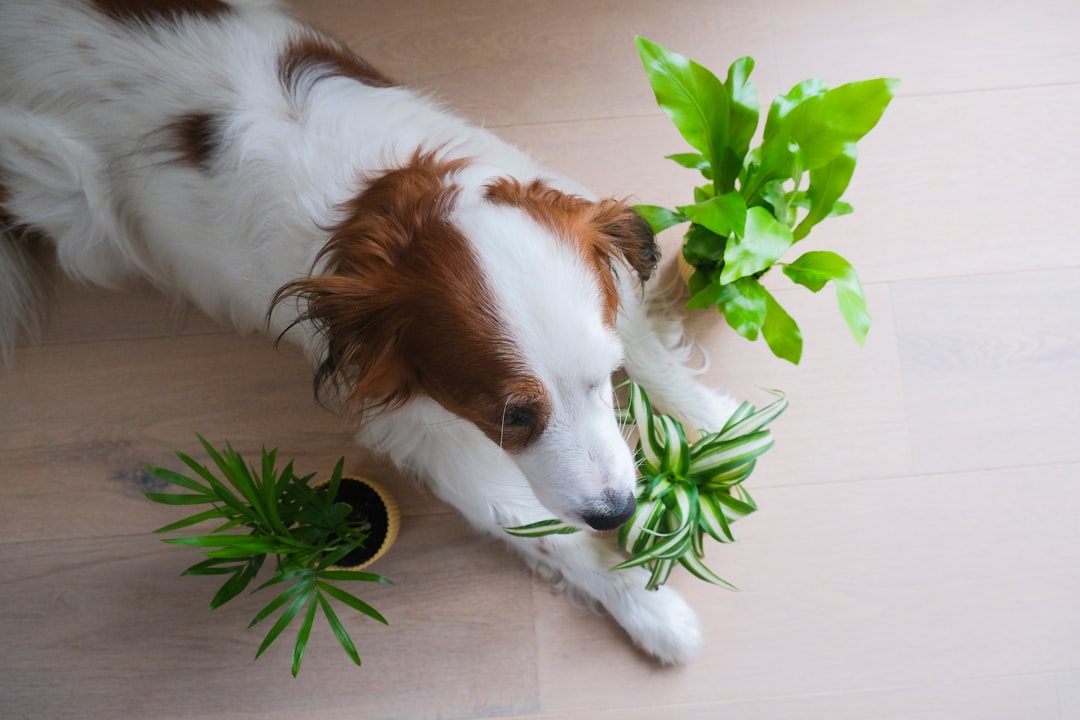Identifying Common Toxic Plants and Symptoms for Dogs
A comprehensive guide on common toxic plants for dogs, their symptoms, and prevention methods to keep your furry friend safe.
Overview of Toxic Plants and Their Symptoms
The prevalence of dogs ingesting toxic plants underscores the need for awareness and prevention. According to the ASPCA Animal Poison Control Center, nearly 9% of calls in 2022 were related to pets ingesting toxic plants. This highlights the significance of understanding common toxic plants and their effects on dogs.
It’s crucial for pet owners to be aware of the most common toxic plants for dogs and their symptoms to ensure the safety and well-being of their furry companions. For instance, Sago Palm, which is often found in homes and gardens, is highly toxic to dogs and can lead to symptoms like vomiting, diarrhea, and liver failure if ingested. This emphasizes the importance of recognizing and preventing exposure to such plants to avoid potential poisoning incidents.
In addition to raising awareness about toxic plants, it’s essential to educate dog owners about the symptoms of plant poisoning. Knowing the signs, such as excessive drooling, weakness, or irregular heartbeat, can prompt timely action if a pet ingests a toxic plant. By understanding the prevalence of toxic plant ingestion and the symptoms associated with it, dog owners can take proactive measures to protect their pets and minimize the risks of plant poisoning.
Common Toxic Plants for Dogs
The prevalence of dogs ingesting toxic plants is a significant concern, with nearly 9% of calls to the ASPCA Animal Poison Control Center in 2022 being related to pets ingesting toxic plants. This highlights the need for awareness and prevention to safeguard the well-being of pets. For instance, Sago Palm is one of the common poisonous plants for dogs, and its ingestion can lead to symptoms such as vomiting, diarrhea, lethargy, and even liver failure. Another example is Lily of the Valley, which contains cardiac glycosides that can cause symptoms like vomiting, diarrhea, decreased heart rate, and even seizures if ingested by dogs.
In addition to the aforementioned common toxic plants, pet owners should also be cautious of extremely poisonous plants for dogs such as Adam-and-Eve, Aloe, Apple, and Azalea. Understanding the symptoms associated with these toxic plants is crucial for prompt identification and intervention. Therefore, pet owners should take proactive measures to pet-proof their homes, avoid having toxic plants altogether, or use barriers and plant stands to keep their dogs away from them. This can greatly reduce the risk of plant poisoning and ensure the safety of their furry companions.
Symptoms of Plant Poisoning in Dogs
Recognizing the symptoms of plant poisoning in dogs is crucial for pet owners. Ingestion of toxic plants can lead to various symptoms such as vomiting, drooling, and diarrhea, which are early warning signs that something may be wrong with your furry friend. For example, if a dog has consumed parts of the Sago Palm, it can lead to symptoms like vomiting, diarrhea, and in severe cases, liver failure.
Furthermore, it’s important to note that puppies and smaller breeds are at a higher risk of plant poisoning, possibly due to their curious and exploratory nature. This underscores the need for dog owners to be particularly vigilant and proactive in preventing their pets from coming into contact with toxic plants.
While there are no specific tests to determine if a dog has plant poisoning, it’s crucial to seek immediate veterinary care if you suspect your dog has ingested a toxic plant. Rapid identification and treatment of symptoms are vital for the well-being of your pet, and can significantly improve their chances of a full recovery. Taking the example of Lily of the Valley, which is highly toxic to dogs, early recognition of symptoms like vomiting and irregular heartbeat can be life-saving.
Prevention and Treatment Methods
Prevention is key when it comes to protecting dogs from plant poisoning. Pet-proofing the home and yard by removing toxic plants altogether or placing them out of reach can significantly reduce the risk of accidental ingestion. For example, popular indoor plants like the Sago Palm, which is highly toxic to dogs, should be kept in areas inaccessible to pets. Barriers such as fencing and plant stands can also be effective in keeping dogs away from potentially harmful plants, especially for curious and mischievous pets who may be inclined to explore.
In the event that a dog does ingest a toxic plant, prompt action is crucial. It is best to seek immediate veterinary assistance by heading to the nearest emergency animal hospital. Alternatively, contacting the ASPCA’s Animal Poison Control Hotline or the Pet Poison Helpline can provide valuable guidance on the next steps to take for the affected pet. These resources can offer specific instructions based on the type of plant ingested and the severity of the poisoning.
Once a dog has ingested a toxic plant, treatment methods may vary depending on the situation. Veterinarians may employ the use of activated charcoal to absorb the toxic substances, induce vomiting to remove the plant material from the dog’s system, and provide general supportive care to mitigate the effects of the poisoning. This supportive care may include intravenous fluids and medications to address symptoms such as vomiting and diarrhea, ensuring the best possible outcome for the affected pet.
Specific Plants to Avoid
Castor bean, also known as Ricinus communis, is a highly toxic plant for dogs. The seeds of the castor bean plant contain ricin, a deadly poison that can cause severe symptoms such as vomiting, diarrhea, abdominal pain, and even organ failure when ingested by dogs. It’s crucial to keep this plant out of reach of pets as even a small amount of ingestion can be fatal.
Another plant to be cautious of is the Oleander, scientifically known as Nerium oleander. This common ornamental plant contains toxic compounds called oleandrin and neriine, which can lead to symptoms like drooling, tremors, seizures, and potentially fatal heart abnormalities in dogs. The attractive appearance of Oleander makes it a popular choice for landscaping, but pet owners should be aware of its harmful effects on dogs.
In addition, the Peace Lily, or Spathiphyllum, is a beautiful but poisonous plant for dogs. Ingestion of the leaves or flowers of the Peace Lily can result in oral irritation, excessive drooling, vomiting, and difficulty swallowing in dogs. Pet parents should take measures to prevent their dogs from accessing this common household plant to avoid potential poisoning incidents.
Conclusion and Action Steps
In addition to keeping toxic plants out of the home and yard, pet owners can take further preventive measures to ensure the safety of their dogs. One effective way to prevent plant poisoning is to educate oneself about the specific toxic plants commonly found in households and gardens. For instance, Sago Palm, despite its attractive appearance, is extremely toxic to dogs if ingested and can lead to symptoms such as vomiting, diarrhea, and even liver failure. By being aware of the potential dangers associated with this plant, dog owners can take proactive steps to remove or avoid it altogether.
Furthermore, creating physical barriers and using plant stands to restrict a dog’s access to potentially toxic plants can significantly reduce the risk of poisoning incidents. For example, placing a fence or barrier around the perimeter of a garden can prevent dogs from coming into contact with harmful plants such as Oleander, which can cause serious health issues if consumed. These preventive measures not only protect dogs but also provide peace of mind to pet owners, knowing that their beloved companions are safe from the dangers of toxic plants.
In the event of a suspected plant poisoning, it is crucial to act swiftly. Contacting a veterinarian or an animal poison control center immediately can make a significant difference in the outcome for the affected dog. Prompt professional advice and assistance can help mitigate the effects of plant poisoning and improve the chances of a positive prognosis for the animal. Therefore, being prepared and knowing the appropriate steps to take in case of an emergency can be lifesaving for dogs exposed to toxic plants.




